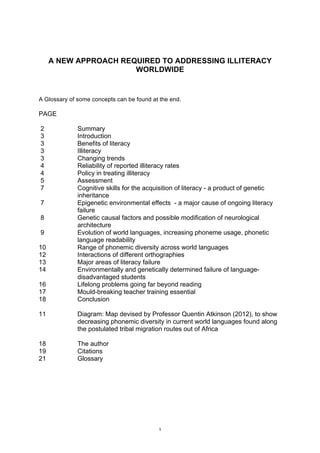This document discusses the complex issues surrounding global illiteracy, emphasizing the genetic and epigenetic factors that contribute to literacy failure. It argues for a comprehensive approach to literacy education that addresses the cognitive skills necessary for reading, rather than simply targeting the symptoms of literacy problems. The author highlights the urgent need for specialized teacher training and multi-sensory teaching methods to effectively improve literacy outcomes, particularly for disadvantaged populations.




























